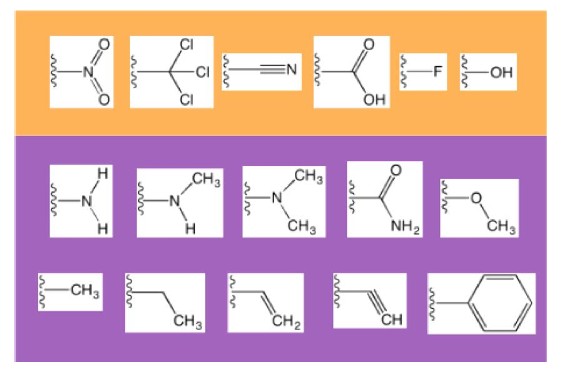
Scientific Achievement
This work utilized high-throughput screening of thousands of molecules to explore the relationship between molecular structure and the reduction/oxidation potentials (ROPs) of organic electrolytes.
Significance and Impact
Non-aqueous redox flow batteries (NRFBs) are devices that can store energy from intermittent sources such as sun and wind to meet the constant demands of powering the grid. NRFBs offer safety and cost advantages that make them especially promising for widespread use. The relationships between structure and ROPs found in this work will be used in high-throughput discovery of new organic molecules to serve as solvents or as electroactive species in NRFBs.
Research Details
ROPs were calculated for more than 4000 molecules using the Electrolyte Genome, a high-throughput screening system that performs theoretical calculations of a molecule’s electronic properties.
The relationship of ROPs to molecular characteristics such as multiple bonds, functional group type, and functional group position were determined.

